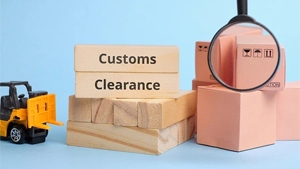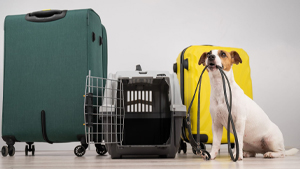A single customs clearance delay can halt your international supply chain and cost your business time and money. A seamless clearance process guarantees on-time delivery, controls expenses, and enhances customer satisfaction. It is one of the most important logistical steps for international shippers. With years of experience, Lac Relocations makes this process easy for businesses to handle.
Here are the best practices for preventing customs clearance delays for your shipments.
1. Ensure Accurate and Complete Customs Documentation
Inaccurate or absence of documentation is one of the main reasons for delays in customs clearance. To confirm what is being shipped its value, its origin and whether it complies with regulations, customs officials rely on documentation. Penalties or inspections may result from even a minor error.
Essential documents include:
- Commercial invoice – Product descriptions, quantities, prices and terms of sale must all be included in the commercial invoice which serves as the buyer and seller’s bill.
- Packing list – Weight, dimensions, and the quantity of packages are all broken down in the packing list.
- Bill of Lading or Air Waybill – Proof of shipment, issued by the carrier, confirming that goods are in transit.
- Certificate of origin – Needed to confirm where the product was manufactured, especially important for preferential trade agreements.
- Special certificates – Certain products such as food health certificates or phytosanitary certificates for plants need extra approvals.
Tips for accuracy:
- Use accurate product descriptions and stay away from vague terms like “parts” or “samples”
- Verify again that the amounts and values in each document match.
- Keep units consistent, such as kilograms instead of mixing with pounds.
- Verify the accuracy of the company’s information, including addresses and tax numbers
Risks of errors:
- Customs holds leading to long storage delays at ports.
- Extra inspection costs or penalties.
- Shipments sent back to the origin country in extreme cases.
Proper documentation is the foundation of smooth clearance. It saves time, protects against fines and prevents cargo from being stuck at customs checkpoints.
2. Classify Goods Correctly with HS Codes
The Harmonized System (HS) code is used worldwide to classify goods. It determines duty rates, restrictions and compliance requirements. Wrong codes lead to shipment delays and penalties.
For example, a company shipping steel parts may misclassify them as finished machinery. Customs may hold the cargo for examination due to this error. Proper duty payment and effortless clearance are ensured when the correct HS code is used.
Codes should be checked by shippers before every shipment. Items that are prohibited, restricted or exempt from duty require extra caution. One of the best strategies to avoid issues at customs is to classify items correctly.
3. Stay Updated on Customs Regulations
Customs laws are subject to frequent and sometimes sudden changes. These adjustments may pertain to duty rates, prohibited items or extra documentation. Companies that fall behind run the risk of delays or increased expenses.
Why updates matter:
- Duty rates – Tariff changes may raise or lower the cost of imports. Not knowing these changes can result in underpayment or overpayment.
- Import and export restrictions – Certain items may become restricted due to health, safety or security reasons. For example new safety standards for electronics or packaging rules for chemicals.
- Country-specific rules – Every country has unique requirements. Some may demand fumigation certificates while others may require product testing reports.
How to stay informed:
- Subscribe to trade and customs authority updates in key markets.
- Work with a freight forwarder who tracks regulation changes for clients.
- Maintain a compliance checklist tailored to each country you ship to.
Although a missed update might not seem quite a lot it can result in shipments getting marked at customs. Staying alert and planned guarantees conforms and prevents unnecessary delays.
4. Work with a Reliable Customs Broker or Freight Forwarder
A customs broker or freight forwarder can be a strong partner in clearing shipment quickly. They are experts at navigating complicated paperwork and rules while maintaining constant touch with custom official.
Role of a customs broker:
- Prepares and submits all customs paperwork.
- Ensures HS codes and product classifications are accurate.
- Calculates duties and taxes correctly.
- Communicates with custom officers on behalf of the importer or exporter.
Benefits of using experts:
- Lower document error and rejections.
- Quick clearance because of its experience and relationships.
- Guidance on compliance for restricted or sensitive goods.
What to look for in a broker or forwarder:
- Knowledge of your specific industry or product type.
- A proven record of handling shipments to your target markets.
- Transparent communication and regular updates.
A challenging procedure can be made easier with an appropriate partner. It also lets companies to concentrate on operations while professionals manage clearance procedure.
5. Use Technology for Shipment Tracking and Management
Technology plays an important role in modern logistics. Shipment tracking systems and customs management software reduce risks by improving visibility and control.
Advantages of digital tools:
- Real-time alerts – Track shipments from origin to destination and receive instant warnings about errors or delays.
- Automated compliance updates – Many systems notify users when tariff codes or regulations change.
- Supply chain visibility – Businesses can see where each shipment is and plan for arrival with confidence.
Practical uses:
- Cloud platforms allow quick sharing of invoices and certificates with customs brokers.
- Integrated systems can automatically match invoices with packing lists reducing mismatches.
- Digital dashboards allow managers to track shipments across multiple countries at once.
Business can control shipment, reduce paperwork errors and respond fast to problem by using technology. A smooth cargo clearance process and lesser delay is the results of this investment.
6. Maintain Clear Communication Between Stakeholders
The effortless coordination of all parties is essential for customs clearance. Communication breakdowns result in mistakes and hold ups.
Teams from within including finance, procurement and logistics, must collaborate on documentation and compliance. Documents and updates should be quickly shared externally by goods forwarders, customs brokers and suppliers.
Using cloud based platforms or shared systems allows instant access to important paperwork. This reduces mistakes and guarantees customs officers get accurate information on time.
7. Prepare for Unexpected Delays
Even the best prepared shipments can face disruptions. Delays may be caused by strikes, weather conditions, port congestion, or political events. Businesses that predict such risks handle it with less disruption.
Possible risks include:
- Labor strikes at ports or airports.
- Hurricanes, floods, or other natural disasters.
- Political tensions or sudden regulatory changes.
- Seasonal congestion during peak shopping seasons.
Tips to prepare:
- Build buffer time into delivery schedules.
- Use backup shipping routes or carriers in case one is blocked.
- Keep extra stock of high-demand items to handle delays.
- Maintain updated contact lists for logistics providers, brokers and carriers.
Planning for disruptions doesn’t stop delays but reduces their impact. A company that prepares in advance avoids major losses while competitors scramble to adjust.
8. Optimize Packaging and Labeling for Customs
Customs officers check packaging and labelling to ensure compliance. Product rejection or inspection may result from poor labelling or packaging.
Packaging requirements:
- Use durable materials that meet international shipping standards.
- Make sure hazardous materials are packaged according to safety regulations, such as using UN-approved containers.
- Secure cargo to prevent damage during handling and inspections.
Labeling tips:
- Include clear product descriptions in line with customs documents.
- Ensure to correctly mark the country of origin on every package.
- Where necessary include handling instructions like “Fragile” or “Keep Upright.”
- Labels that are unclear may cause confusion for customs officials.
Proper labelling and packaging reduces the likelihood of additional check and saves time at customs.They also protect goods during transit, cutting the risk of losses.
9. Track and Audit Past Shipments
Learning from prior shipments is a useful tactic to improve customs clearance performance. Frequent audits help in identifying persistent errors in communication, classification or documentation.
For example a business can concentrate on educating employees about classification rules if it observes recurring delays brought on by HS code problems. Businesses can improve quality and reduce risk in future shipments by investigating previous issues. It is about building a stronger and more reliable customs process.
How to Achieve Hassle-Free Customs Clearance
Consistent work and attention to detail is important to prevent customs delays.The foundation is made up of current conformity knowledge, accurate documentation and appropriate HS codes. Additional layers of security can be added by using technology, collaborating with knowledgeable brokers and keeping lines of communication open. The process is completed by reviewing previous shipments, preparing for emergencies and using strong packaging.
These actions work together to create a system that keeps cargo moving without causing expensive delays. Companies that invests save money, safeguard supply chains and gain the trust of the clients.
Lac Relocations helps businesses with international shipping and smooth customs clearance. Their knowledge guarantees that companies can concentrate on expansion while shipments cross borders without problems.

















